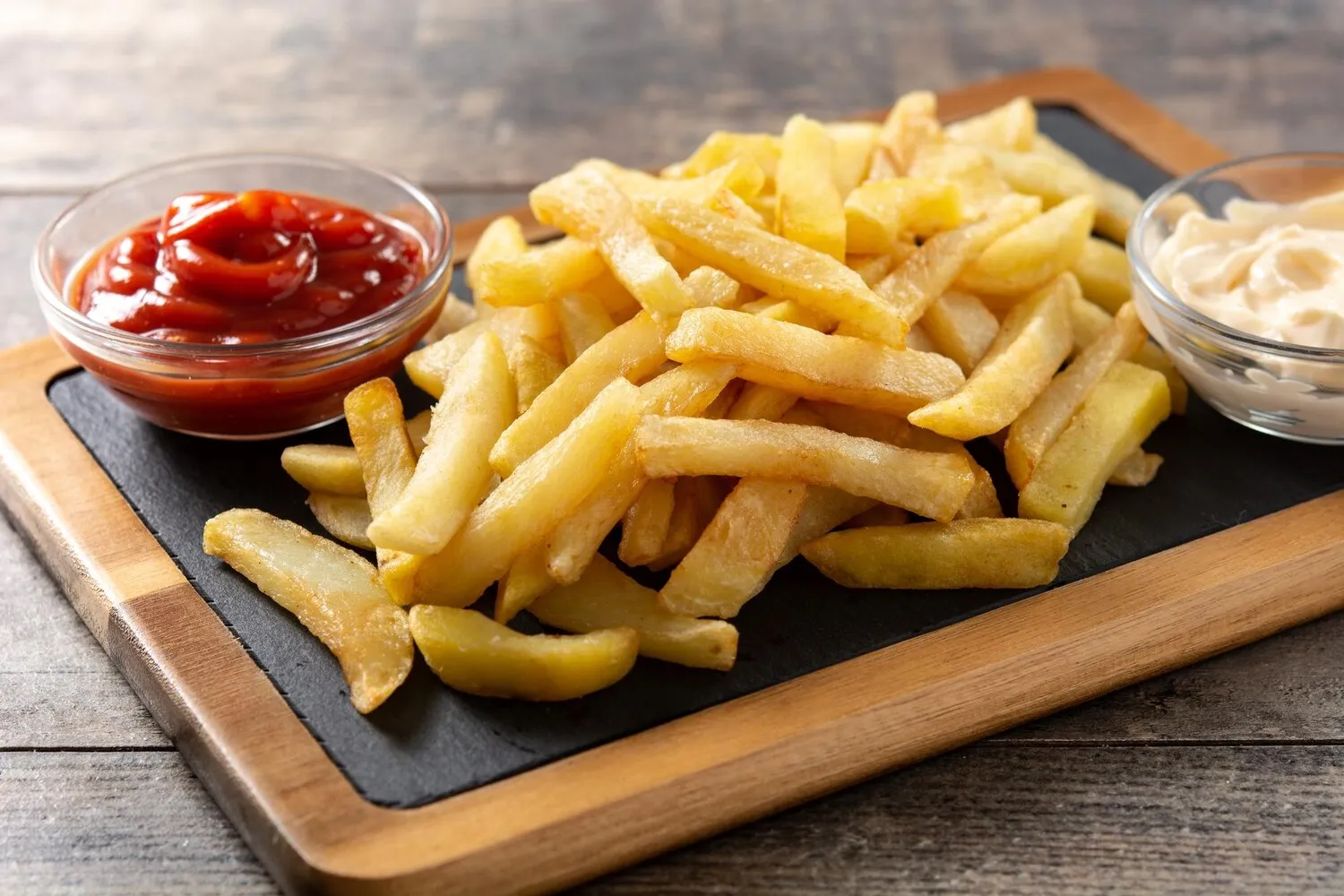
Mandioca Frita
Fried cassava, a popular side dish in Brazil.
Nutrition Facts
* The % Daily Value (DV) tells you how much a nutrient in a serving of food contributes to a daily diet. 2,000 calories a day is used for general nutrition advice.
Paraíso da Carne do Sol
Cassava, also known as mandioca or yuca, is native to South America and has been a staple food for indigenous populations for thousands of years. Its cultivation predates European colonization, and it played a crucial role in the diets of various tribes. The practice of frying cassava likely developed as a way to preserve and enhance its flavor, influenced by both indigenous cooking techniques and later European culinary practices.
Mandioca Frita is a ubiquitous and cherished side dish in Brazilian cuisine, representing simplicity, resourcefulness, and comfort.
Everyday Staple
Fried cassava is a common accompaniment to meals throughout Brazil, from humble homes to upscale restaurants. It's readily available and enjoyed by people of all socioeconomic backgrounds.
Bar Food Favorite
Mandioca Frita is a popular snack served in 'botecos' (Brazilian bars), often paired with cold beer or 'caipirinhas'. It's a social food, meant to be shared and enjoyed with friends.
Regional Variations
While the basic preparation is similar across the country, regional variations exist. Some regions may use different types of cassava or frying techniques, resulting in slight differences in flavor and texture.
Mandioca Frita offers a delightful contrast of textures and subtle earthy flavors.
The exterior is crispy and golden brown, while the interior remains soft and slightly starchy. The flavor is mildly sweet with a nutty undertone, often enhanced by a simple seasoning of salt. The oil used for frying contributes to the overall richness and flavor profile. The texture is a key element, providing a satisfying crunch followed by a tender bite.
Choosing the Right Cassava
Select fresh, firm cassava roots. Avoid those with blemishes or soft spots. Different varieties of cassava exist, some being sweeter and more suitable for frying than others. Ask your local vendor for recommendations.
Proper Preparation
Peel the cassava thoroughly, removing all of the waxy outer layer. Cut into uniform sizes to ensure even cooking. Soaking the cassava pieces in cold water for about 30 minutes before frying can help remove excess starch and improve crispness.
Frying Temperature
Maintain a consistent oil temperature of around 350°F (175°C). Avoid overcrowding the pan, as this will lower the oil temperature and result in soggy cassava. Fry in batches for best results.
Double Frying
For extra crispiness, consider double frying. Fry the cassava once at a lower temperature to cook it through, then fry it again at a higher temperature to achieve a golden-brown and crunchy exterior.
Seasoning
Season generously with salt immediately after frying. Consider adding other seasonings, such as garlic powder, paprika, or herbs, for added flavor.
Explore additional Side dish dishes and restaurants
Explore Side dishDiscover top dining spots and culinary experiences in Feira de Santana.
Explore Feira de SantanaLearn more about the food culture, restaurant scene, and culinary heritage of Brazil.
Explore Brazil